Energy Policy Expert David Sandalow Discusses Key Trends at IMECE Keynote
Energy Policy Expert David Sandalow Discusses Key Trends at IMECE Keynote
Dec. 9, 2016
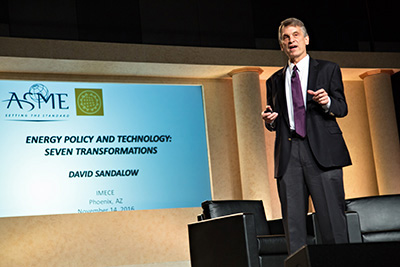
During a lively and enlightening Keynote Event at the ASME International Mechanical Engineering Congress and Exposition (IMECE) last month in Phoenix, Ariz., noted energy and climate policy authority David Sandalow shared his thoughts on the key technology- and energy-related trends he believes will have major implications on the United States — and society in general — for the foreseeable future.
Sandalow, the inaugural Fellow at Columbia University’s Center on Global Energy Policy, began his presentation, “Energy Policy and Technology: Seven Trends to Watch,” by displaying a 30-year-old photo of Shanghai, China’s financial center, Pudong, on the ballroom screens. That bleak image depicting a cityscape of desolate factories and shipyards — Shanghai had “essentially no electric lighting,” when he first visited in 1981, Sandalow said — contrasted sharply with the following image of the thriving, completely electrified Shanghai of today. During those three decades, China rose to economic prominence as a leader in manufacturing and construction, evolving from a country where more than 90 percent of its population lived on less than $1.25 per day to one where fewer than 10 percent now exist at that level of poverty, Sandalow said.
This change in China’s fortunes exemplified one of several significant trends now shaping the world we live in — a trend Sandalow called “the transformation of emerging economies.” This kind of dramatic transformation has its drawbacks, however. “All of this comes at a cost,” said Sandalow, who held senior positions at the U.S. Department of Energy, including acting Under Secretary of Energy and Assistant Secretary for Policy & International Affairs before joining Columbia University. “The air pollution in China is absolutely horrific.” It is so bad, in fact, that the country’s residents are as cognizant of their region’s PM2.5 reading, the fine-particle air pollution index, as they are of the weather and the temperature forecasts for that day.
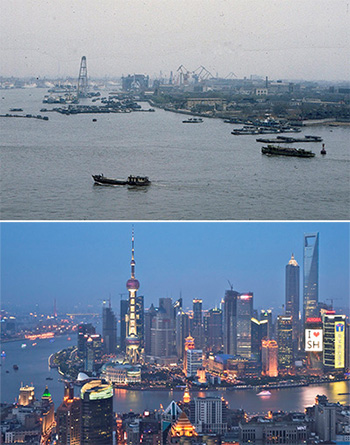
India, which has also experienced remarkable economic advances in recent years, faces a similar challenge. “India’s growth is extraordinary,” Sandalow said. “India’s going to surpass China in terms of population,” most likely within the next 20 years, he said. “The economic growth in India has been steady at seven percent and growing – higher than China’s. And by the way, the air pollution problems there are epic.” The city of Delhi, for example, has reached historically hazardous air pollution levels in recent weeks, according to Sandalow. “It’s quite a crisis,” he said. “Managing these types of issues is going to be a big challenge in the years ahead.”
Another development Sandalow expects will have considerable consequences for society will be the transformation of the U.S. energy policy following the recent election of Donald Trump as the next president of the United States. Noting that while it is hard to predict what will occur during Trump’s presidency due to the president-elect’s lack of previous experience as an elected official and his inconsistent stances on some issues, Sandalow said there was a “reasonable amount of certainty” regarding a few components of Trump's energy plan. A key feature of the plan, for instance, is expected to be a “fossil fuels first” philosophy, which would most likely lead to federal lands and waters being opened up to drilling and result in the lifting of the moratorium on coal drilling on federal lands. “That seems to be a fairly consistent theme that he has talked about when he talks about energy,” Sandalow said.
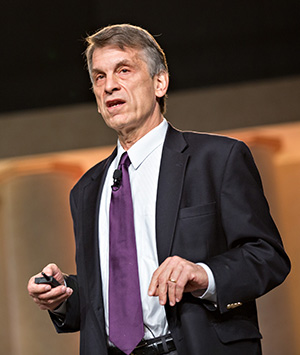
Other trends Sandalow identified as having significant impact on society in the years and decades to come included developments within transportation, including the combined impact of ride-sharing, electric drive trains and autonomous vehicles on the sector; the potentially dramatic effect of distributed technologies and batteries on the power sector; cyberspace’s influence on the energy space and its role in revealing privacy issues; and the literal transformation of the planet due to the effects of climate change.
During a question and answer period following the presentation, which was moderated by ASME Executive Director Thomas Loughlin, Sandalow discussed a number of topics related to energy and engineering, including the vulnerability of the United States’ electric grid. “We are fortunate that we have not had a major cyber-attack on the electric grid that has succeeded,” he said. “It is going to require constant attention and vigilance over the course of the years ahead to defend against that threat. We have adversaries who have intention in this regard. They may not yet have capability, but they may in the years ahead. And the potential consequences of electric blackouts are really devastating.”
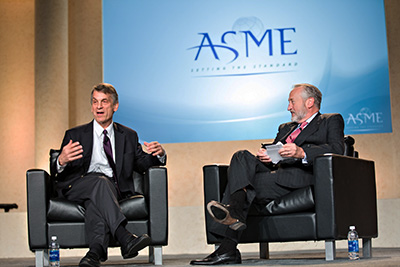
Asked what the thought the United States’ energy portfolio might look like in the next five to 10 years, Sandalow believed there would be steady growth in renewable energy, particularly solar power, and that natural gas would continue to play an “increasingly strong role in our energy mix,” due to its low cost. His outlook for nuclear energy and coal was not so optimistic, however, as he expected the percentage of both in the energy portfolio to drop during the next decade. His outlook for electric vehicles was brighter, though. “I think we’ll see steady growth in electric vehicles,” he said. “There’s a slightly slower growth curve on that. But as battery costs continue to come down, electric vehicles are going to be more and more competitive.”
Sandalow ended the Q&A with an appeal to the engineers in the audience to become engaged in the policy-making process. “You are problem solvers,” he said. “Please take your perspective into the policy world. One of the great rewards of the more than four years I spent working at the U.S. Department of Energy was the chance to work with a group of professionals — many of whom were engineers — who have a problem-solving mentality. I hope you pay attention to the policy world and that you bring that perspective into it.”
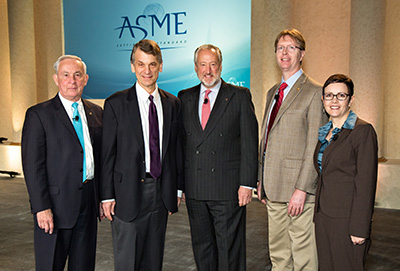
Prior to Sandalow’s presentation, the Keynote Event opened with the premiere of two new ASME videos. ASME President Keith Roe introduced the 2016 State of the Society video, which covers ASME’s recent activities and initiatives, including the launch of the Society’s new strategy and organization model to provide a framework for the future growth and success of the Society. To view the 2016 State of the Society video, visit www.asme.org/engineering-topics/media/technology-and-society/video-2016-state-the-society.
ASME Executive Director Thomas Loughlin then presented a video on ASME’s new global program for students, E-Fests. The three-day, two-night E-Fests, which will debut next spring, are regional events featuring TED-style talks, career development events, networking opportunities, student competitions including the Student Design Competition and the Human Powered Vehicle Challenge, and much more. To learn more about the E-Fest program, or to watch the video, visit http://efests.asme.org.




